38 dv on food labels
Food Labels: Fat & Cholesterol | Home & Garden Information Center The 2015 Dietary Guidelines for Americans recommends the following intakes of fat and cholesterol every day: total fat—20 to 35% of calories, depending on age and gender (65 grams for the 2,000-calorie intake level used in the Daily Value)*. saturated fat—less than 10% of calories**. trans fat— keep as low as possible. Nutrition Facts table formats - Food labels - Canadian Food … Although the Food and Drug Regulations (FDR) require the declaration of a Nutrition Facts table (NFt) on most prepackaged products, the information may be presented in a variety of different formats. Industry has considerable flexibility in presentation, and may choose from several different format "families". Within each format family, further choices of presentation style are …
The Basics of the Nutrition Facts Label - Academy of Nutrition and ... 04-03-2022 · Percent DV are for the entire day, not just one meal or snack. Daily Values are average levels of nutrients based on a person who eats 2,000 calories a day. A food item with a 5% DV of fat provides 5% of the total fat that a person who needs 2,000 calories a day should eat. You may need more or less than 2,000 calories per day.
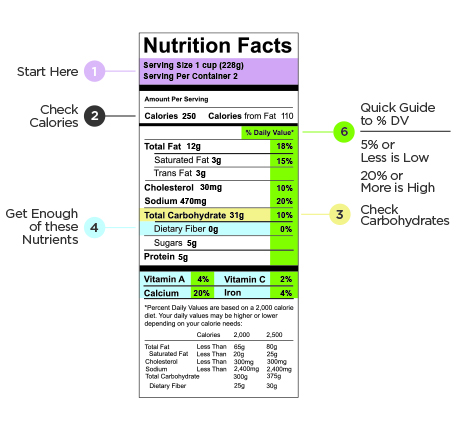
Dv on food labels
Top 10 Foods Highest in Vitamin B12 (Cobalamin) - myfooddata 23-04-2022 · The current daily value (%DV) ... which has been recently reduced from 6μg per the USDA food labeling standards. For this reason, the percentage of the daily value (%DV) may appear lower on outdated product labels. Below are the top 10 foods highest in vitamin B12, click here for an extended list of vitamin B12 rich foods, ... Daily Value: Definition and How to Calculate It - Insider Found on the nutrition label, the daily value system tells you can help you determine if a product is high or low in particular nutrients. What does daily value mean? Daily value (DV) refers to how much of a nutrient you should consume each day based on a 2,000 calorie diet. You can find daily values for a range of nutrients on the FDA's website. Food Labeling: MedlinePlus With this, you can figure out if a food is high or low in a nutrient: 5% or less is low, 20% or more is high. The information on a food label can help you see how a certain food or drink fits into your overall diet. The label lists, per serving,: The number of calories. Fats, including total fat, saturated fat, and trans fat. Cholesterol. Sodium.
Dv on food labels. Solved 21. From Food Labels: What is DV? According to FDA, | Chegg.com Expert Answer. DV in food labels refers to Percentage daily value of nutrients in one serving of the given food .This is …. View the full answer. Transcribed image text: 21. Home | Dietary Supplement Label Database (DSLD) | NIH Office of Dietary ... Use the chart to learn how many products of each supplement form are in the DSLD. To search by a specific form, click on the supplement form below. 0 10,000 20,000 30,000 40,000 50,000 Number of Labels Capsules Tablets and Pills Powders Liquids Softgel Capsules Other (e.g. tea bag) Gummies and Jellies Lozenges Unknown Bars. What does percent Daily Value (DV) on food labels mean? A food item with a 5 percent DV means 5 percent of the amount of fat that a person consuming 2,000 calories per day would eat. Remember, percent DVs are for the entire day -- not just for one meal or snack. You may need more or less than 2,000 calories per day. For some nutrients you may need more or less than 100 percent DV. SecondsCount.org Top 10 Foods Highest in Selenium - myfooddata Apr 23, 2022 · Daily Value (%DV) - The %DV is a general guideline for everyone and accounts for absorption factors. It is the most common target in the U.S. and is the target on the nutrition labels of most products. It is set by the U.S. FDA. Reference Dietary Intake (%RDI) - The Reference Dietary Intake (RDI) is a customized target accounting for age and ...
Folate and Folic Acid on the Nutrition and Supplement Facts ... Feb 25, 2022 · 20% DV or more of folate per serving means the product is high in folate. Don’t forget to include foods that have folate, such as those listed above, in your healthy eating plan. How you can Calculate % of Daily Value on Food Labels Step 3. Divide the nutrient amount by the total daily recommended value. Step 4. Multiply by 100.The % Daily Value (%DV) is the percentage of the Daily Value for each nutrient in a serving of the food. The Daily Values are reference amounts (expressed in grams, milligrams, or micrograms) of. Food Labeling & Nutrition | FDA Food labeling is required for most prepared foods, such as breads, cereals, canned and frozen foods, snacks, desserts, drinks, etc. Nutrition labeling for raw produce (fruits and vegetables) and... What Does "% Daily Value" Mean on a Food or Supplement Label? The 100% Daily Value is more than what most people consume. The 100% Daily Value amount is a goal, an encouragement to increase the intake of each of these nutrients. Nutrients to limit: These are total fat, saturated fat, trans fat, cholesterol, and sodium. For these nutrients, the 100% DV is an approximate upper limit of safe consumption.
Making Sense of Food Labels | ADA - American Diabetes Association Percent Daily Values (%DV) The Percent Daily Values for each nutrient are found in the right column on the label. These tell you what percent of each nutrient the food provides if you were on a 2,000 calorie per day diet. As a general rule of thumb, aim for less than 5% for nutrients you want to limit, such as sodium and saturated fat. How To Read Food and Beverage Labels - National Institute on Aging Or you can call the U.S. Department of Agriculture's Food and Nutrition Information Center at 301-504-5414. Understanding percent Daily Value (% DV) The percent Daily Value (% DV) tells how much a nutrient in a serving of the food or beverage contributes to a total daily 2,000-calorie diet. 5 Tips on How to Read a Food Label | Arizona Wellness Center 5. Percent Daily Value, or % DV: This percentage gives you an idea of the number of nutrients that are available in a single serving. If you intend to avoid or limit a certain nutrient like cholesterol, sodium, trans fat or saturated fat. Select food products that show less than 5% Daily Value on the food label. What does dv mean on food labels? - Dane101 Percent Daily Value (DV) on the Nutrition Facts label is a guide to the nutrients in one serving of food. For example, if the label lists 15% for calcium, it means that one serving provides 15% of the calcium you need each day. DV s are based on a 2,000-calorie diet for healthy adults. What does 5 percent DV mean in food?
Daily Value and Percent Daily Value: Changes on the New Nutrition and ... Facts Labels Daily Value vs. % Daily Value First, let's look at how Daily Value (DV) and Percent Daily Value (%DV) work together. ... Use %DV to determine if a serving of the food is high or low ...
Food Labels | CDC - Centers for Disease Control and Prevention All the numbers on this label are for a 2/3-cup serving. This package has 8 servings. If you eat the whole thing, you are eating 8 times the amount of calories, carbs, fat, etc., shown on the label. Total Carbohydrate shows you types of carbs in the food, including sugar and fiber. Choose foods with more fiber, vitamins, and minerals.
What Is the Difference Between DRI & Daily Value? - SFGATE This number, called the daily value or DV, is based on the amount of each nutrient needed for a 2,000-calorie-a-day diet. You won't find the daily value on the nutrition facts label. Instead, it's...
Understanding Food Labels - The Nutrition Source The information on food labels is intended to help consumers become savvy about their food choices. The front, ... 5% DV or less of a nutrient per serving is considered low. If you are trying to follow a heart-healthy diet, you might aim for this percentage amount for items like saturated fat, ...
Top 10 Foods Highest in Thiamin (Vitamin B1) - myfooddata 24-04-2022 · About Nutrient Targets. Setting targets can provide a guide to healthy eating. Some of the most popular targets include: Daily Value (%DV) - The %DV is a general guideline for everyone and accounts for absorption factors. It is the most common target in the U.S. and is the target on the nutrition labels of most products.
Understand Food Labels - UF/IFAS Extension Marion County Daily Value Percentage (% DV) and Footnote (in blue): As noted in the chocolate bar's footnote "The % Daily Value (%DV) tells you how much a nutrient in a serving of food contributes to a daily diet. 2.000 calories a day is used for general nutrition advice." This simply means that the nutrient section is calculated based on a 2,000-calorie diet.
FDA Food Label Nutrients Without a DV - Metabolic Research Center This is because it hasn't established any specific guidelines about how much a person can consume for optimal health. Food manufacturers are required to give a percentage of the daily value for protein if a product is labeled as being high in protein, or if it's specifically made for children or infants under the age of four. Avoid These...
Understanding Food Labels | The Nutrition Source | Harvard T ... Chile implemented the Law of Food Labeling and Advertising in 2016, comprised of mandatory front-of-package (FOP) warning labels, restrictions on child-directed marketing, and the banning of sales in schools of all foods and beverages containing added sugars, sodium, or saturated fats that exceeded set nutrient or calorie thresholds. [1]
How to Understand and Use the Nutrition Facts Label | FDA - U.S. Food ... 5% DV or less of a nutrient per serving is considered low 20% DV or more of a nutrient per serving is considered high More often, choose foods that are: Higher in %DV for Dietary Fiber, Vitamin D,...
How to Read Food Labels: Your Complete Consumer Guide The rightmost column of the Nutrition Facts portion of the label gives you the percent of Daily Value (DV) of that particular food component. Most labels carry an asterisked explanation such as, "The % Daily Value (DV) tells you how much a nutrient in a serving of food contributes to a daily diet. 2,000 calories per day is used as general ...
Daily Values (DVs) - National Institutes of Health DVs were developed by the U.S. Food and Drug Administration (FDA) to help consumers determine the level of various nutrients in a standard serving of food in relation to their approximate requirement for it. The label actually provides the %DV so that you can see how much (what percentage) a serving of the product contributes to reaching the DV.
Understanding Food Nutrition Labels | American Heart Association 5 - Understand % Daily Value. The % Daily Value (DV) tells you the percentage of each nutrient in a single serving, in terms of the daily recommended amount. ... When the Nutrition Facts label says a food contains "0 g" of trans fat, but includes "partially hydrogenated oil" in the ingredient list, it means the food contains some trans ...
Examples of Different Label Formats that Using the New ... The % Daily Value (DV) tells you how much a nutrient in a serving of food contributes to a daily diet. 2,000 calories a day is used for general nutrition advice. * Vitamin D 2mcg Calcium 260mg ...
The Lows and Highs of Percent Daily Value on the Label 5% DV or less of a nutrient per serving is considered low. 20% DV or more of a nutrient per serving is considered high. More often, choose foods that are: Higher in dietary fiber, vitamin D,...
How to Read Supplement Labels Like a Pro - Healthline 15-07-2020 · Supplement labels often contain terms like “all natural” or “organic,” which may be confusing for consumers. Here are a few of the most common terms you may see listed on your supplement.
Why is organic food more expensive than conventional food? Non-certified organic food. In many developing countries, there are agricultural systems that fully meet the requirements of organic agriculture but which are not certified. Non-certified organic agriculture refers to organic agricultural practices by intent and not by default; this excludes non-sustainable systems which do not use synthetic inputs but which degrade soils due to lack of …
Daily Value on the New Nutrition and Supplement Facts Labels The Nutrition Facts label must list total fat, saturated fat, trans fat, cholesterol, sodium, total carbohydrate, dietary fiber, total sugars, added sugars, protein, and certain vitamins and...
Making Sense of Food Labels | ADA - American Diabetes … 26-04-2022 · Percent Daily Values (%DV) The Percent Daily Values for each nutrient are found in the right column on the label. These tell you what percent of each nutrient the food provides if you were on a 2,000 calorie per day diet. As a general rule of thumb, aim for less than 5% for nutrients you want to limit, such as sodium and saturated fat.
Daily Value on the New Nutrition and Supplement Facts Labels 25-02-2022 · That means that a packaged food with 1,060mg of sodium in one serving (previously 44% DV) now has 46% DV. See below for a side-by-side comparison of the information on the original and new ...
How to Calculate % of Daily Value on Food Labels | livestrong Food labels include most relevant information, including calories, fat, protein, and carbohydrate content. Vitamin and mineral levels are also included. These numbers do not mean much unless you know how much of these nutrients you should be eating daily. The percent of daily value provides this context.
Why is organic food more expensive than conventional food? Certified organic food. Certified organic products are generally more expensive than their conventional counterparts (for which prices have been declining) for a number of reasons: Organic food supply is limited as compared to demand;
Percent daily value - Canada.ca The % DV is found on the right-hand side of a nutrition facts table. It is a guide to help you make informed food choices. It shows you if the serving size has a little or a lot of a nutrient: 5% DV or less is a little 15% DV or more is a lot This applies to all nutrients with a % DV.
How to Calculate Percentage DV for a Nutrient - SFGATE Divide the given amount of the nutrient by the appropriate recommended daily value found on the FDA guide. So if your item contains 300 milligrams of calcium per serving, divide 300 by 1,000, which...
What is the difference between the RDA and the DV for vitamins and ... The DVs (Daily Values) are set by the FDA. On food and supplement labels, you will find the "%DV" listed for vitamins and minerals which are required by law to be listed.
How to Understand and Use the Nutrition Facts Label | FDA - U.S. Food … 25-02-2022 · People look at food labels for a variety of reasons. But whatever the reason, many consumers would like to know how to use this information more effectively and easily.
Percent Daily Value: What does it mean? - Drugs.com Percent Daily Value (DV) on the Nutrition Facts label is a guide to the nutrients in one serving of food. For example, if the label lists 15% for calcium, it means that one serving provides 15% of the calcium you need each day. DV s are based on a 2,000-calorie diet for healthy adults. Even if your diet is higher or lower in calories, you can ...
Food Labeling: MedlinePlus With this, you can figure out if a food is high or low in a nutrient: 5% or less is low, 20% or more is high. The information on a food label can help you see how a certain food or drink fits into your overall diet. The label lists, per serving,: The number of calories. Fats, including total fat, saturated fat, and trans fat. Cholesterol. Sodium.
Daily Value: Definition and How to Calculate It - Insider Found on the nutrition label, the daily value system tells you can help you determine if a product is high or low in particular nutrients. What does daily value mean? Daily value (DV) refers to how much of a nutrient you should consume each day based on a 2,000 calorie diet. You can find daily values for a range of nutrients on the FDA's website.
Top 10 Foods Highest in Vitamin B12 (Cobalamin) - myfooddata 23-04-2022 · The current daily value (%DV) ... which has been recently reduced from 6μg per the USDA food labeling standards. For this reason, the percentage of the daily value (%DV) may appear lower on outdated product labels. Below are the top 10 foods highest in vitamin B12, click here for an extended list of vitamin B12 rich foods, ...
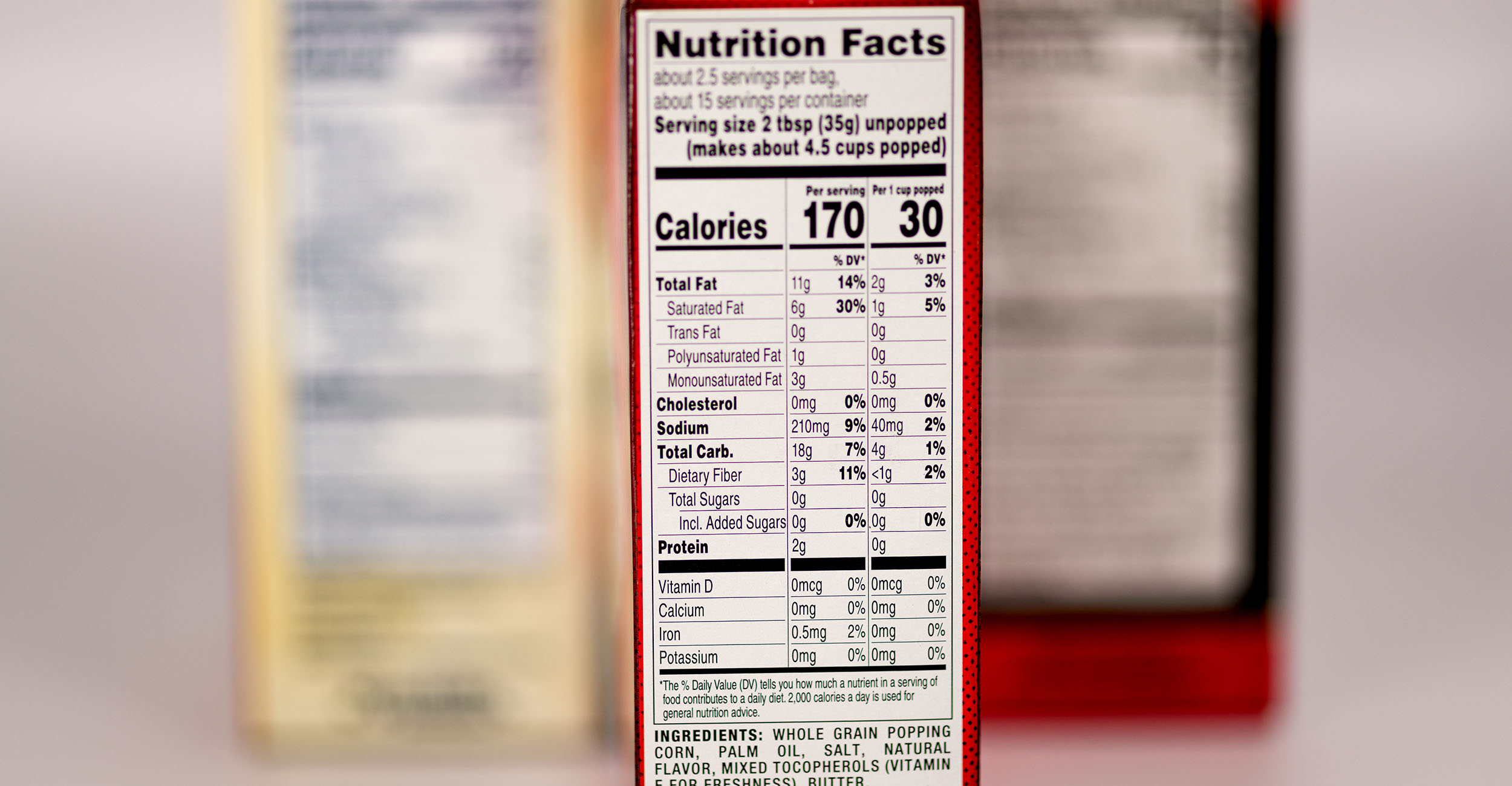
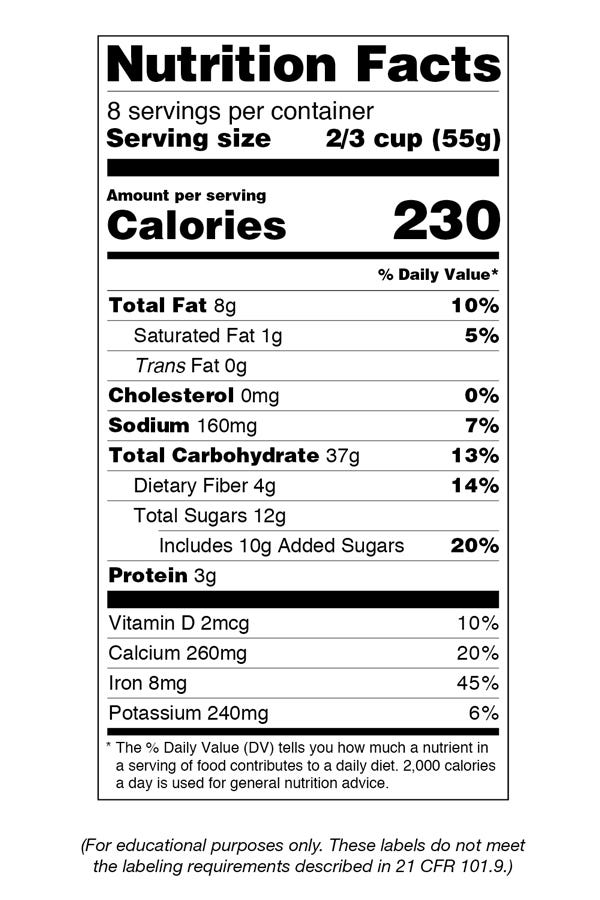

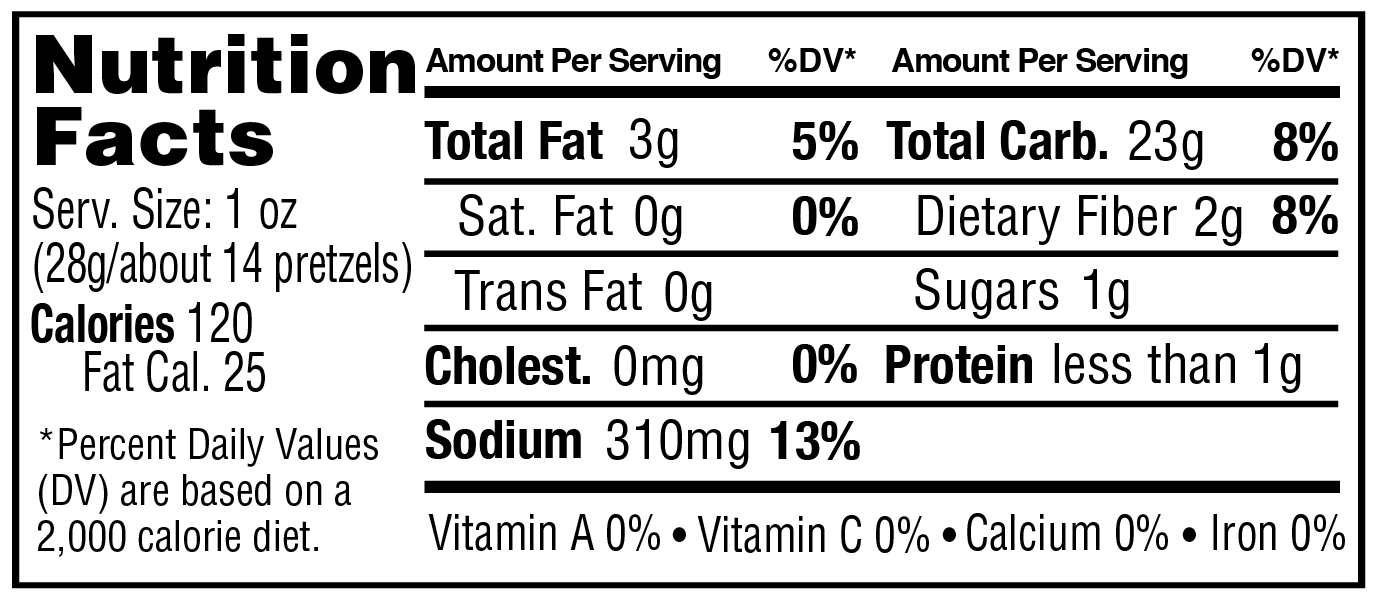
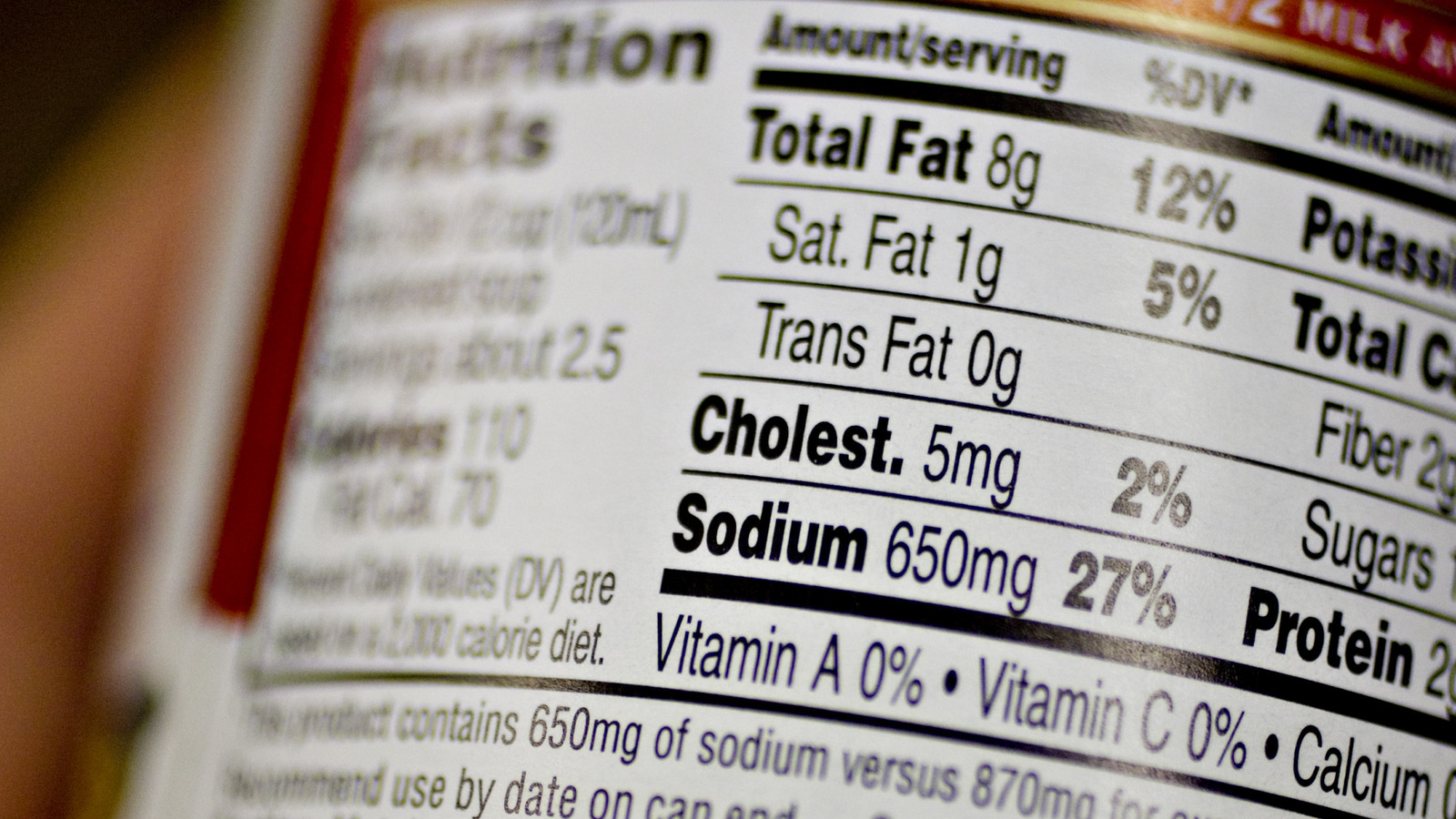
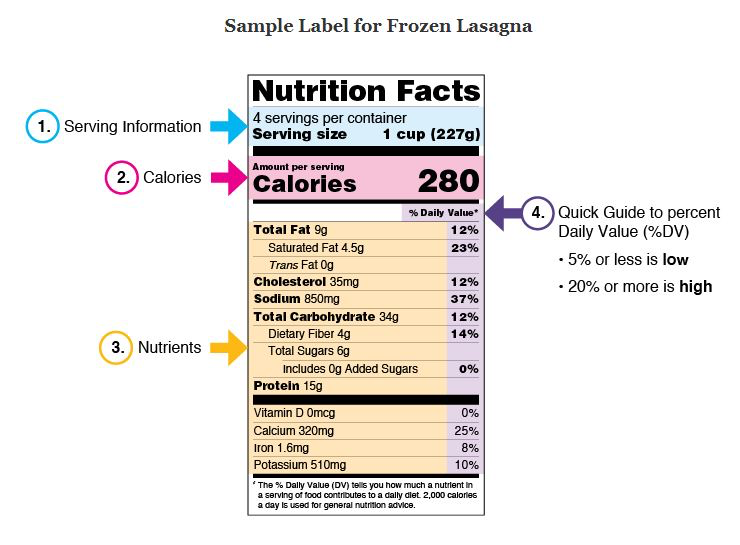
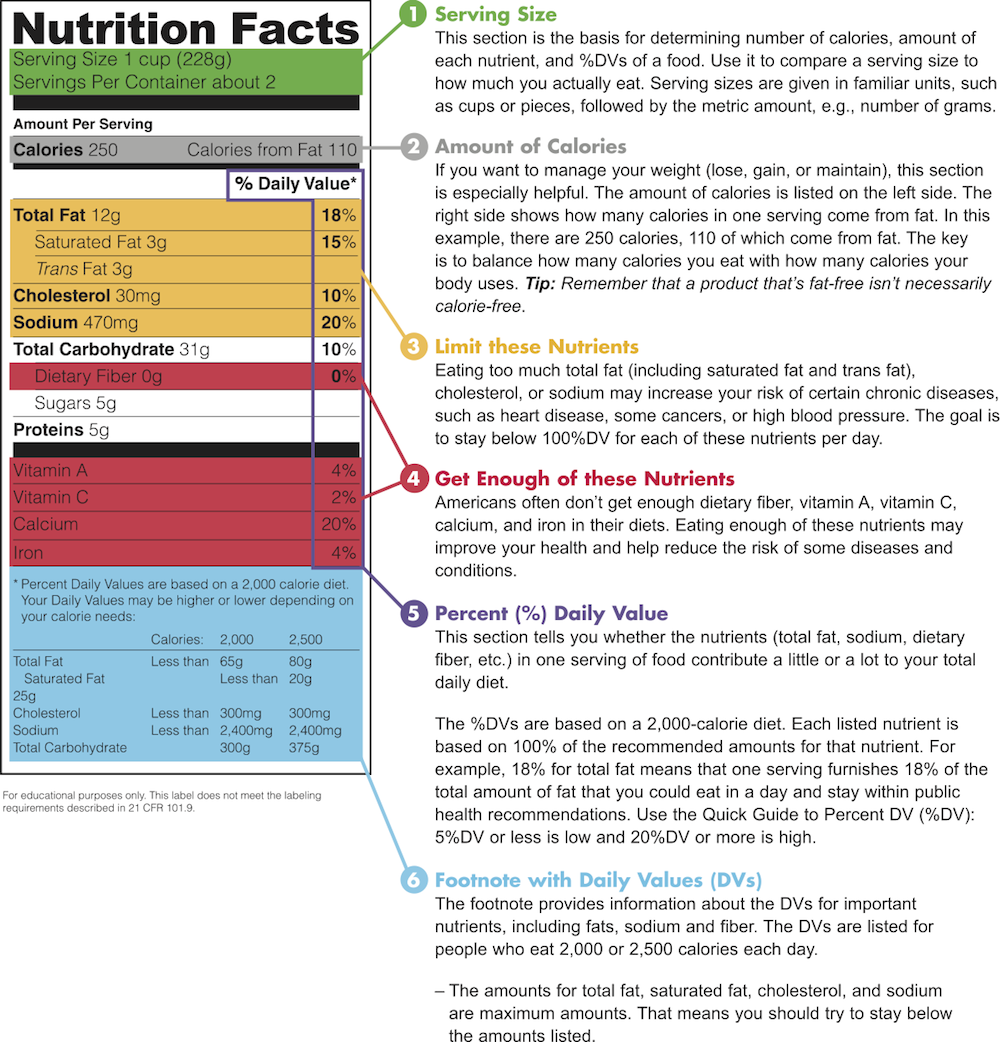




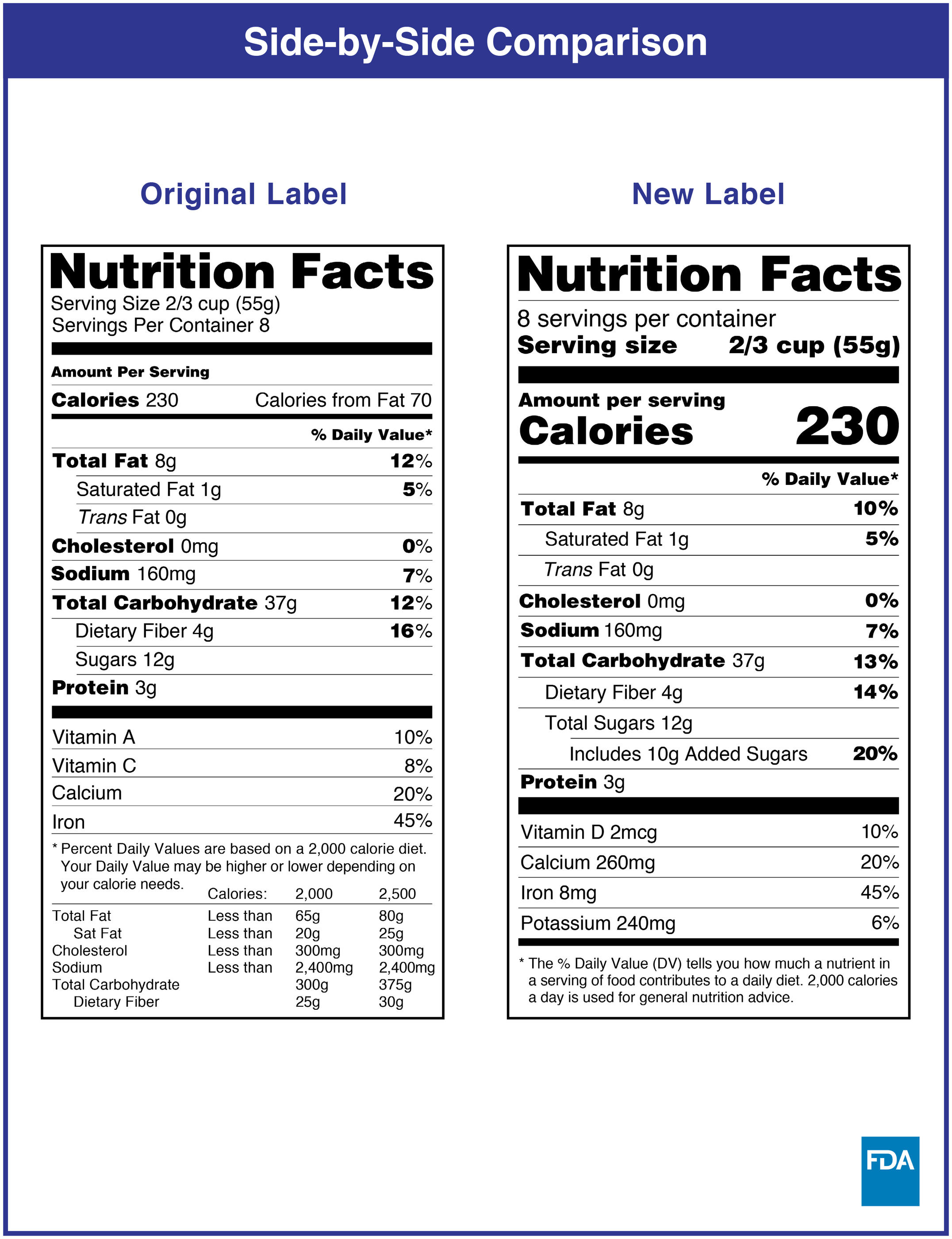


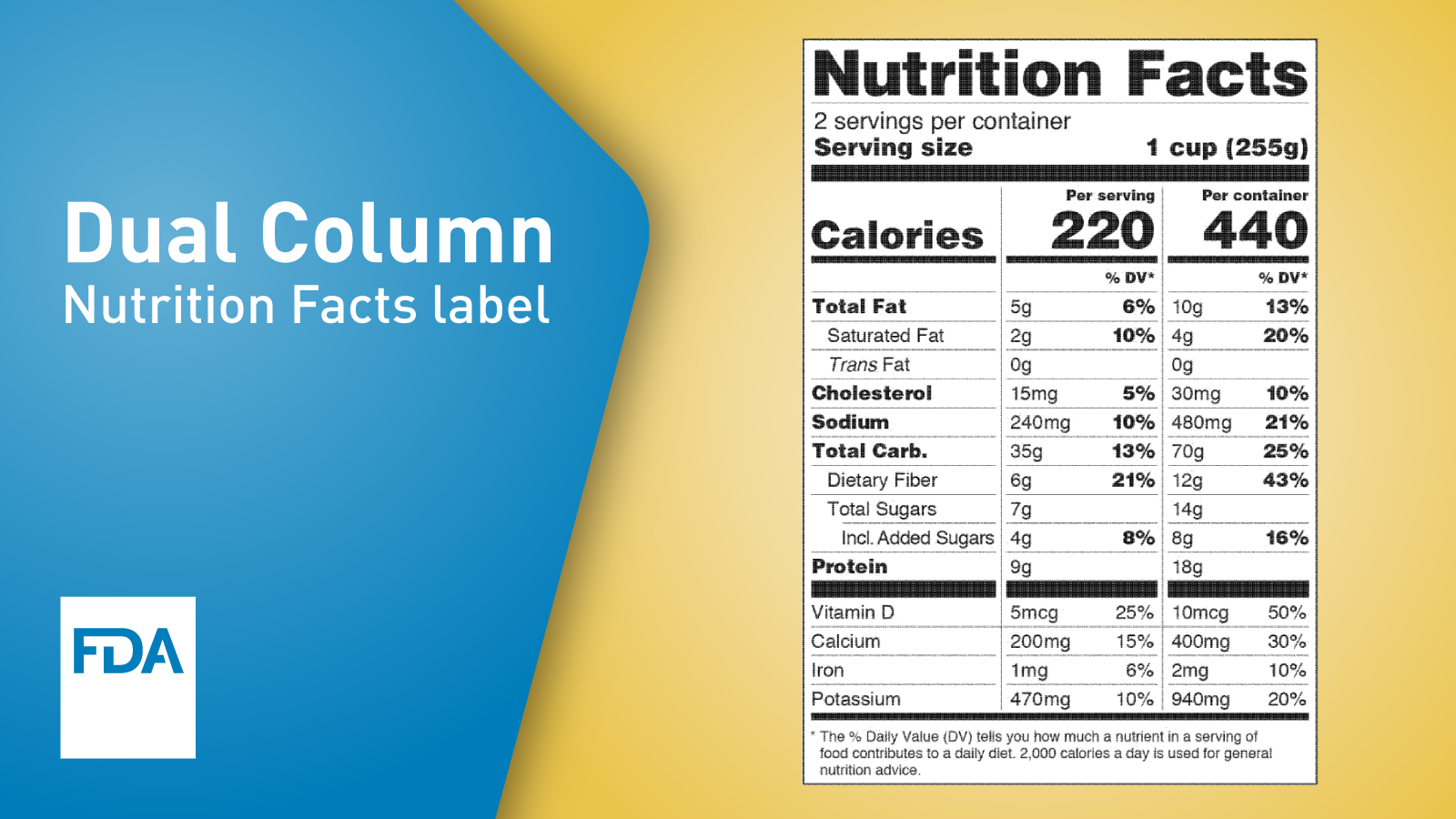
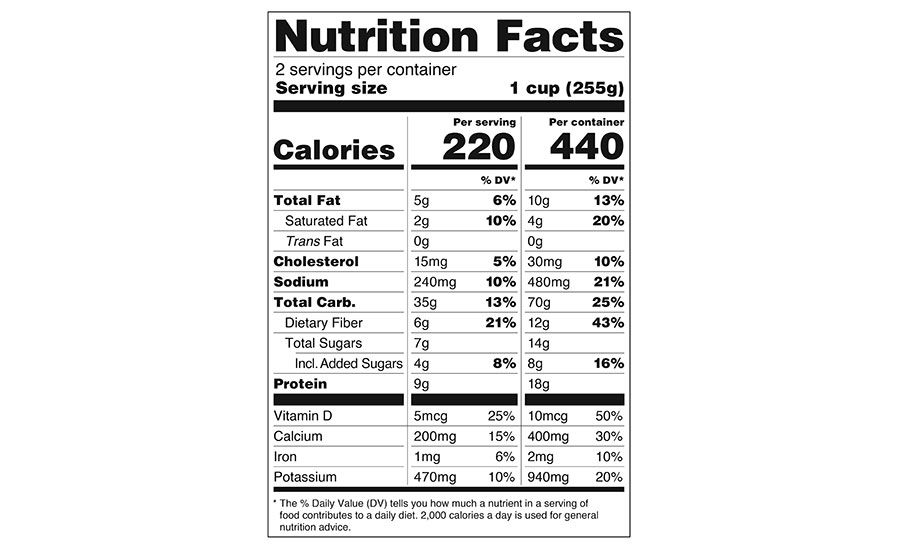
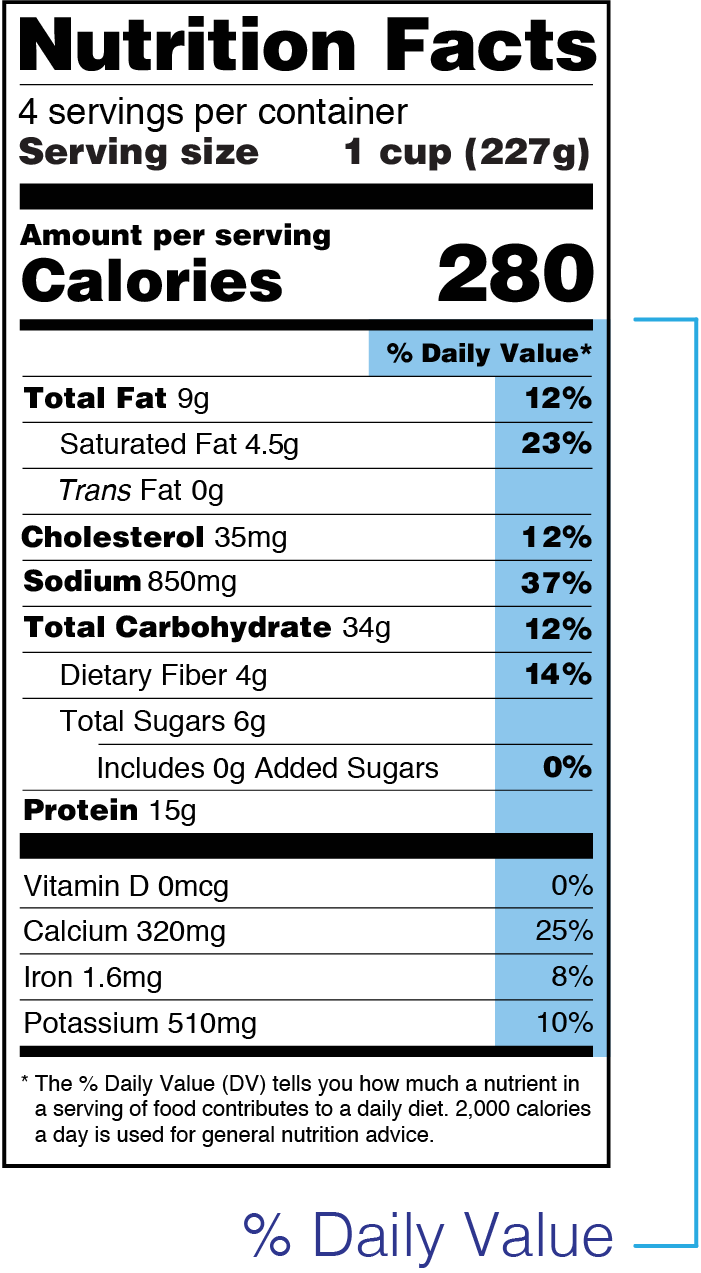

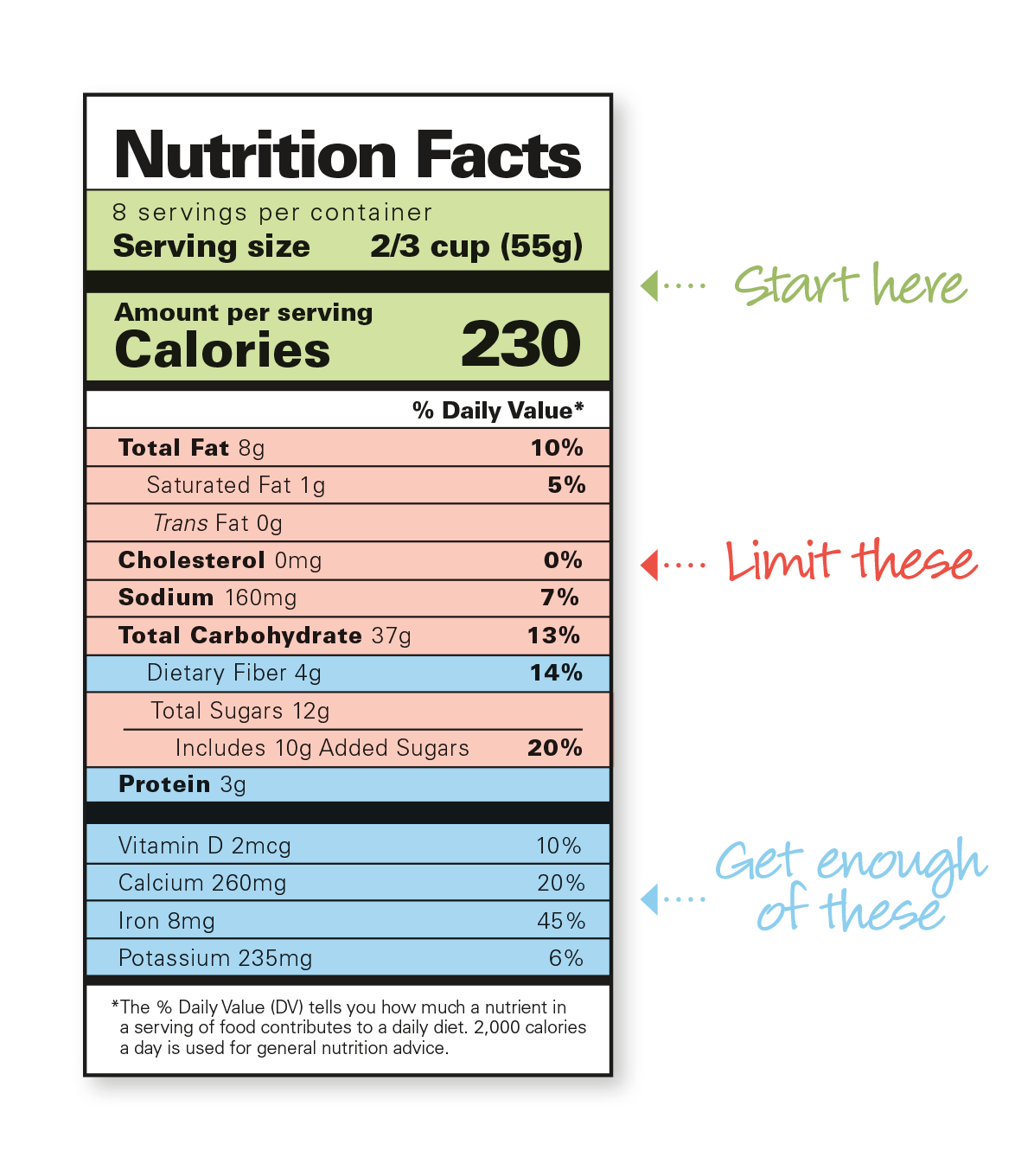

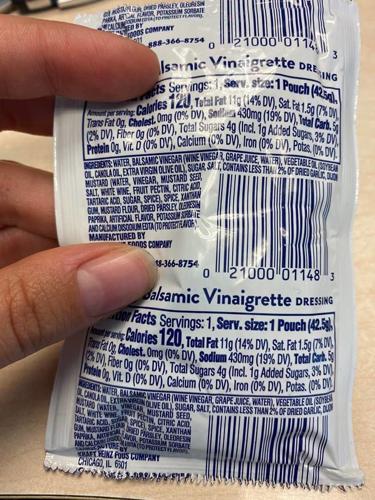

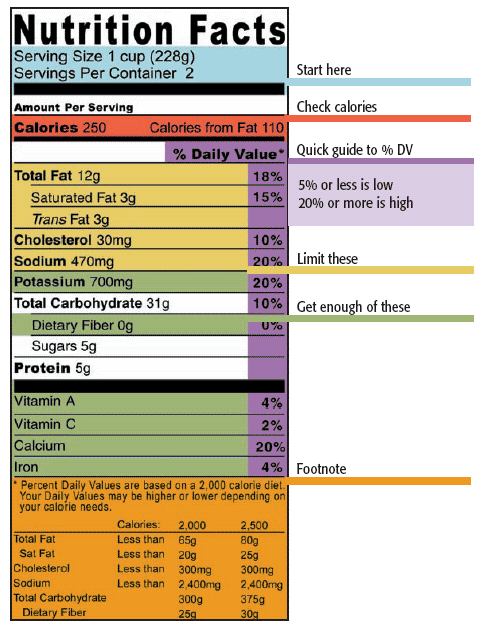

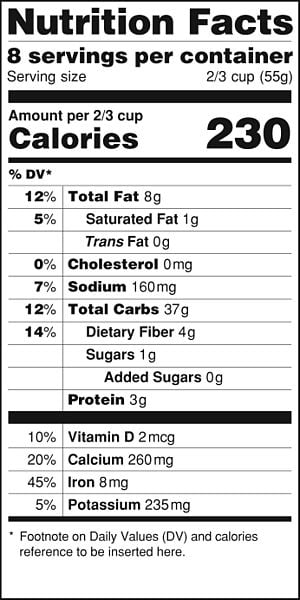

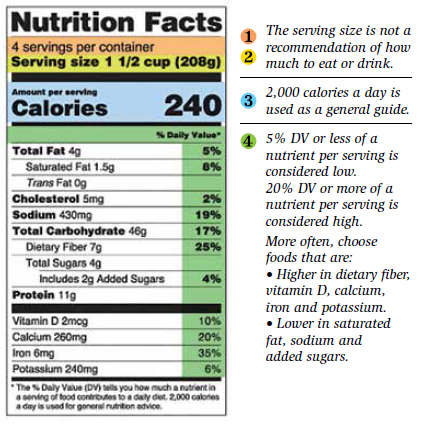

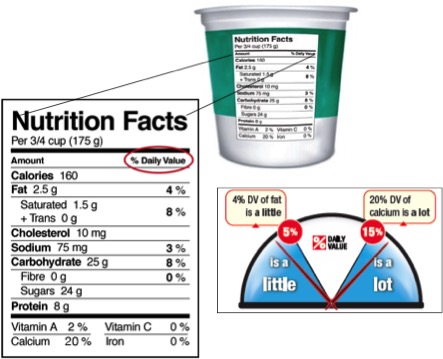

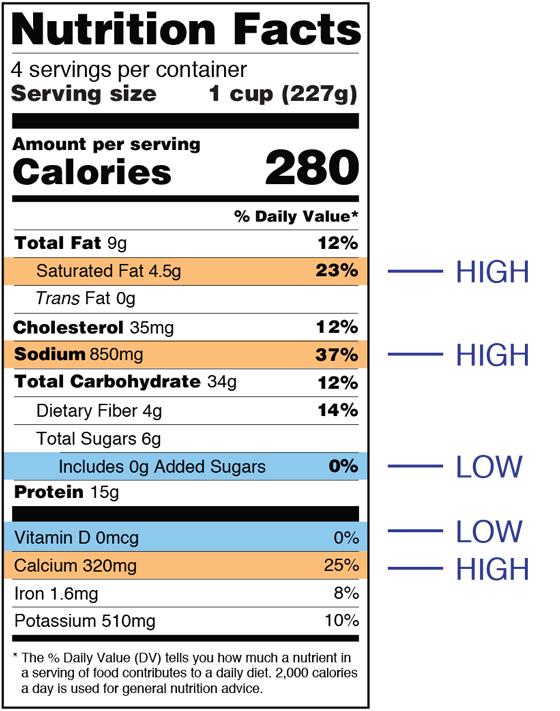
Post a Comment for "38 dv on food labels"